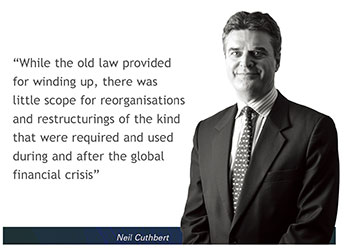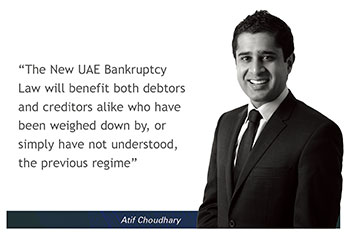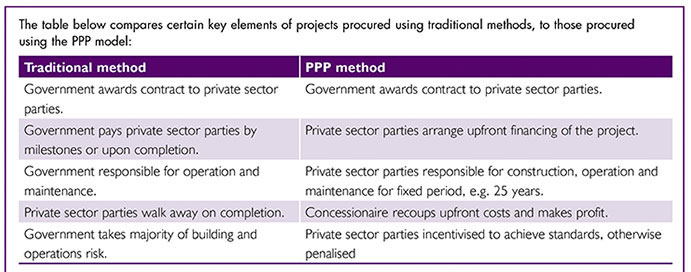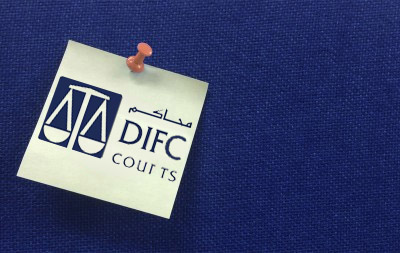By Neil Cuthbert and Atif Choudhary, Dentons
The United Arab Emirates’ much-awaited new bankruptcy law is a positive step forward for the country’s insolvency regime. If implemented constructively and embraced within the business community, it should streamline insolvency proceedings and create improvements in efficiency and cost.
Federal Law No. 9 of 2016 (the New UAE Bankruptcy Law), which was published on September 29, 2016 and came into force on December 29, repeals the previous bankruptcy regime, which was set out in the UAE Commercial Code and Penal Code. It heralds a new era of bankruptcy laws in the UAE and seeks to bring the regime up to the standard of other, more developed, bankruptcy regimes seen in some of the more developed Western jurisdictions.
One area that some had hoped would be addressed in the New UAE Bankruptcy Law is support for “‘self-help” remedies (ie, out-of-court, private arrangements) of the kind that have been successfully implemented in other jurisdictions. Unfortunately, the new law does not go this far, but it does encourage companies to pursue rescue proceedings, with a degree of protection from creditors and criminal liability, which previously existed for certain acts, with the aim of ultimately improving recovery rates, preserving assets and avoiding bankruptcy.
To better understand the New UAE Bankruptcy Law and the direction it has taken, it is helpful to step back and look briefly at some of the perceived flaws in the predecessor regime. The old law was outdated and, in many respects, impractical in the modern commercial landscape. Processes were slow and cumbersome, and relied heavily on intervention by the court system.
While the old law provided for winding up, there was little scope for reorganisations and restructurings of the kind that were required and used during and after the global financial crisis. The government was forced in several high-profile cases, most notably Dubai World/Nakheel, to introduce debtor/company-specific legislation to provide the legal environment for a consensual restructuring. In addition, most of the regime was largely untested in practice and most parties preferred to negotiate consensual settlements out of court. The degree of uncertainty also resulted in directors/owners of businesses facing financial difficulties fleeing the country for fear of the threat of prison and attempting to negotiate with their creditors from overseas.
The New UAE Bankruptcy Law applies to:
- companies that are subject to the new UAE Commercial Companies Law (which itself only came into force in 2015);
- “free zone” entities, other than entities incorporated in free zones such as the Dubai International Financial Centre and Abu Dhabi Global Markets, which are financial free zones with their own bankruptcy regimes;
- sole establishments;
- licensed civil companies engaged in professional business (eg, lawyers, doctors, engineers); and
- government-owned companies whose constitutional documents expressly adopt the New UAE Bankruptcy Law (eg, those formed by Emiri decree).
The New UAE Bankruptcy Law does not apply to:
- individuals acting in their private capacity;
- government (including its departments and entities, except as noted above);
- trading banks; and
- insurance companies.
The New UAE Bankruptcy Law provides for three main procedures: protective composition, restructuring and liquidation.
 Protective composition
Protective composition
The protective composition procedure (PCP) is a procedure for debtors who are not yet insolvent, but find themselves in financial difficulties. The debtor must not have ceased payment of debts for more than 30 consecutive working days prior to entry into a PCP. The idea is of course to prevent the debtor from falling into bankruptcy. This procedure is alien to the US Chapter 11 proceedings and is based on the French sauvegarde model.
PCP may only be applied for by the debtor (or ordered by the court). An important feature of PCP is that secured creditors may enforce their security during a PCP, with the leave of court.
Broadly the process involves the entity continuing to manage its own business (but under the supervision of an administrator (appointed by the court)). During this time the company’s creditors must submit details of their debts to the administrator, and prove for those debts. A scheme of composition is then prepared by the administrator (with the assistance of the debtor), which scheme will set out the terms and conditions for fulfilment of the debt and other obligations and also any grace periods and payment deductions. It will also assess whether the debtor is able to bear the costs associated with the PCP. The process is led by the entity and sponsored by the court.
Once submitted, the scheme must be approved by unsecured creditors with the following conditions: (a) the majority of unsecured creditors support the scheme; and (b) the debts of those unsecured creditors account for two thirds of the total debts of the unsecured creditors (in each case of each class of creditors). In addition, the court will assess the viability of the proposed composition, with the assistance of insolvency experts if required. If the scheme is approved, the unsecured creditors will not be permitted to take separate enforcement action against the debtor.
In terms of implementation, the scheme must be implemented within three years of court approval (although this may be extended for a further three years, with creditor approval).
Restructuring
Unlike the PCP, a restructuring can take place where the entity has already become insolvent, but where the court determines that the entity’s business is capable of rescue.
It involves the restructuring of debts and businesses outside of the courts through a facilitating agreement between the debtor and creditors to avoid bankruptcy. In this sense it has a similar purpose to a PCP with the key distinction that the debtor is already insolvent.
Restructurings will be monitored and administered by a Financial Restructuring Committee (FRC), with the assistance of insolvency experts. The FRC will be formed by Cabinet Resolution, under the authority of the Ministry of Finance. The primary roles of the FRC are to supervise and manage the process outside of the courts, maintain an approved list of insolvency experts that may be appointed to assist it with its role, set the pay and approve costs of insolvency experts, and maintain a register of insolvencies.
Any restructuring will have the same approval thresholds as a PCP, as mentioned above. In terms of implementation, the scheme must be implemented within five years of court approval (although this too may be extended for a further three years, with creditor approval).
 Liquidation
Liquidation
The third key procedure is liquidation. This will apply where the debtor is insolvent and where a PCP or restructuring scheme is not appropriate, is not approved, or is terminated.
As with analogous procedures in other jurisdictions, liquidation involves full bankruptcy proceedings through the courts, which could also involve restructuring or otherwise dissolution. The process is overseen by the court and bankruptcy administrators — the administrator assumes control (not the debtor) and there is oversight also from creditors (with leave of the court).
There is no prescribed timeframe for completion of the liquidation; however, the bankruptcy administrator must update the court every 30 days as to the status of the process.
Other key changes under the New UAE Bankruptcy Law include:
(a) Crime of dishonoured cheques
The UAE Penal Code provided for criminal penalties (fines and potential imprisonment) for non-UAE national signatories of dishonoured cheques. Under the New UAE Bankruptcy Law, criminal proceedings for dishonoured cheques will be stayed, if a PCP or restructuring scheme has been initiated and the cheque was issued before commencement of rescue proceedings.
The amount of the cheque will become part of the debtor’s overall debts and the creditor will be treated as such for the purposes of voting on the PCP or the restructuring. The stay on criminal proceedings will remain in place until the PCP or restructuring is completed. Following this an application can be made for discharge of the debt and rectification of the criminal breach. But once the stay is lifted, and in cases not involving a PCP or restructuring, bounced cheques will continue to have criminal repercussions.
(b) Criminal offence of “bankruptcy by default”
The UAE Commercial Code provided for an offence where a trader is unable to pay its debts and fails to apply for bankruptcy within 30 days. In addition, the Penal Code provided for fines and potential imprisonment. Under the New UAE Bankruptcy Law failure to initiate insolvency proceedings is no longer a criminal offence.
(c) Application by creditor for bankruptcy
The Commercial Code provides for any creditor to apply for a company’s bankruptcy, regardless of the amount of its debt. However, under the New UAE Bankruptcy Law, creditor(s) must meet a new threshold requirement. This is that the debt owed to them must amount to a minimum of AED100,000 (subject to future changes by the Council of Ministers) and the creditor(s) must first give written notice to the debtor to pay the debt, and allow the debtor 30 consecutive business days to pay.
In summary, the New UAE Bankruptcy Law will benefit both debtors and creditors alike who have been weighed down by, or simply have not understood, the previous regime. However, the UAE courts are already over-burdened and the new duties and responsibilities imposed upon them by the regime will be challenging.
_________________
neil.cuthbert@dentons.com
atif.choudhary@dentons.com
www.dentons.com/en.aspx

















